Nidaros Cathedral - The pilgrim destination
The shrine of St. Olav in Nidaros Cathedral has been an important object of pilgrimage since the Viking king Olav Haraldsson was ordained as a saint in 1031. What kind of experience is it to arrive here today?
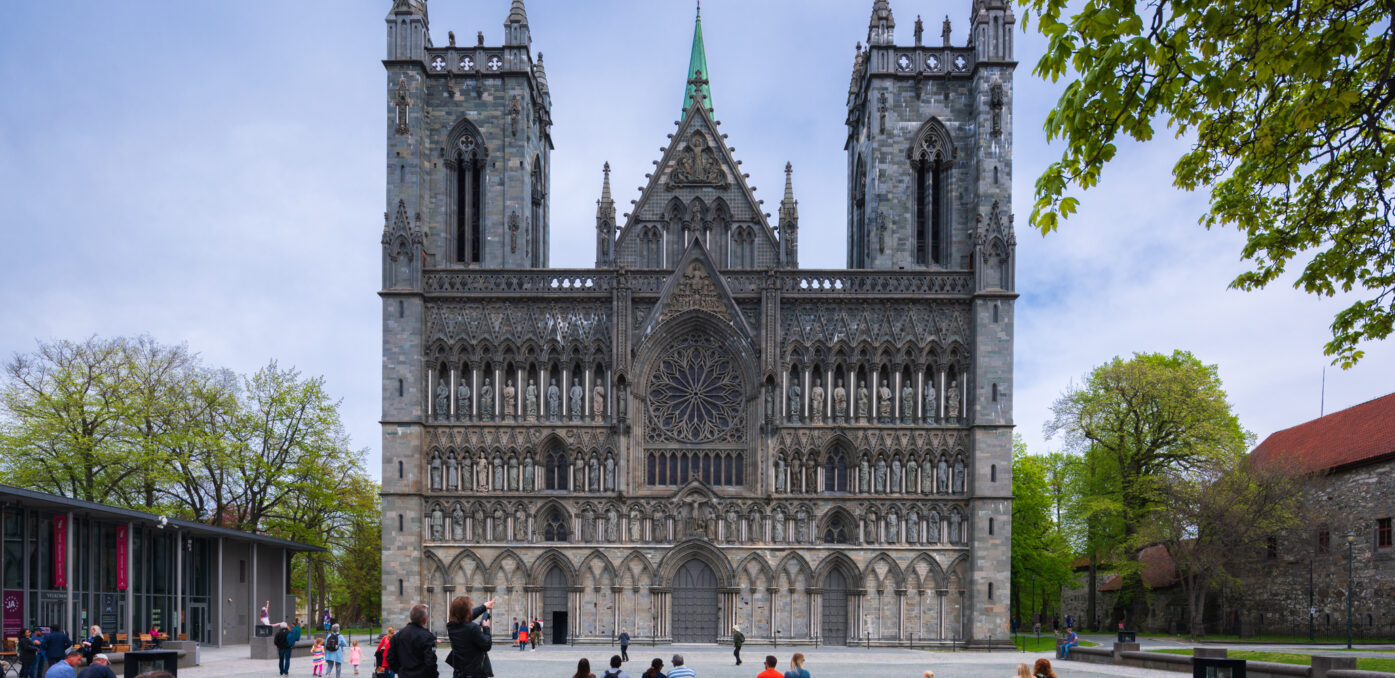
Foto: Knut Aage Dahl
The pilgrimage destination of the North - a powerful sight
Nidaros Cathedral in Trondheim is an important destination for pilgrims from all over the world. The cathedral, which had it's early beginnings as a wooden chapel built over St. Olav’s tomb, has evolved into a magnificent cathedral.
Nidaros Cathedral is the place where Norwegian monarchs have been crowned, and is Norway's national shrine. The cathedral is an architectural masterpiece with intricate stone sculptures and stained glass windows. A result of impressive craftsmanship from generations of stone carvers, masons, glass masters and blacksmiths. Imagine what number of people have lived, visited, worked upon and experienced this Nordic cathedral throughout the centuries. What stories are in these walls?
The rituals of pilgrimage upon arrival
Nidaros Cathedral is located in a beautiful historic area in the middle of Trondheim, on a natural promontory that the river Nidelven winds around. Trondheim’s historic Archdiocese, the Archbishop's Palace, is located just beside the church. Along the river south of the Archdiocese you will find a large park area called “Marinen” where “St Olav’s Spring” is located. According to legend, the spring emerged at the spot where Saint Olav’s coffin was unearthed a year after his death, making it a pilgrimage site in itself during the Middle Ages.
It is traditionally said that pilgrims should approach the pilgrimage destination slowly and reverently. Historical rituals of pilgrimage suggest walking around the cathedral three times before entering.
Inside the church, you are greeted by beautiful stained-glass windows framed by Gothic and Romanesque arches. At the opposite end of the church from the rose window, you will find the octagon with the altar in the center. You can follow a walkway around the octagon, and halfway around, you will find a small chapel. There you'll see a replica of the St. Olav altar frontal—a painting from the first half of the 14th century depicting events before and after Saint Olav’s death. The original altar frontal can be found in the Archbishop’s Palace Museum, located next to Nidaros Cathedral.
In the center of the Octagon, there is a high altar with a shape inspired by the Shrine of St. Olav, marking the site believed to be St. Olav’s burial place. When you reach this point the pilgrimage is considered complete.
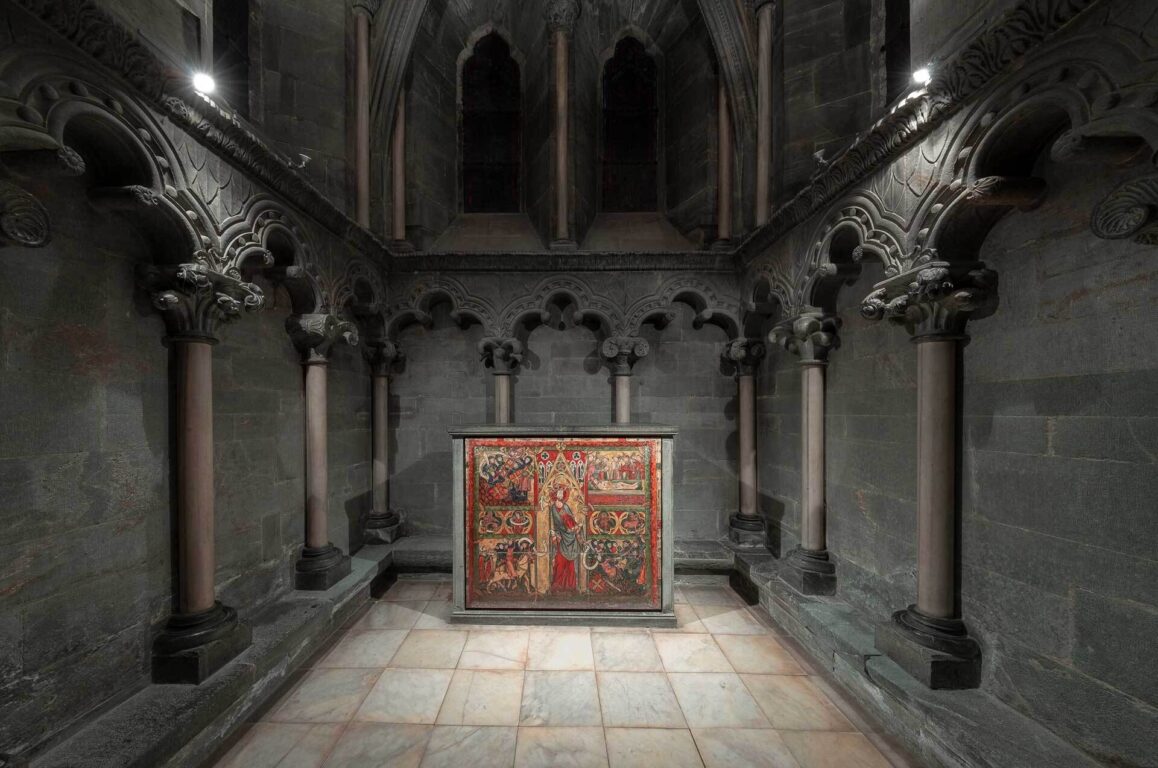
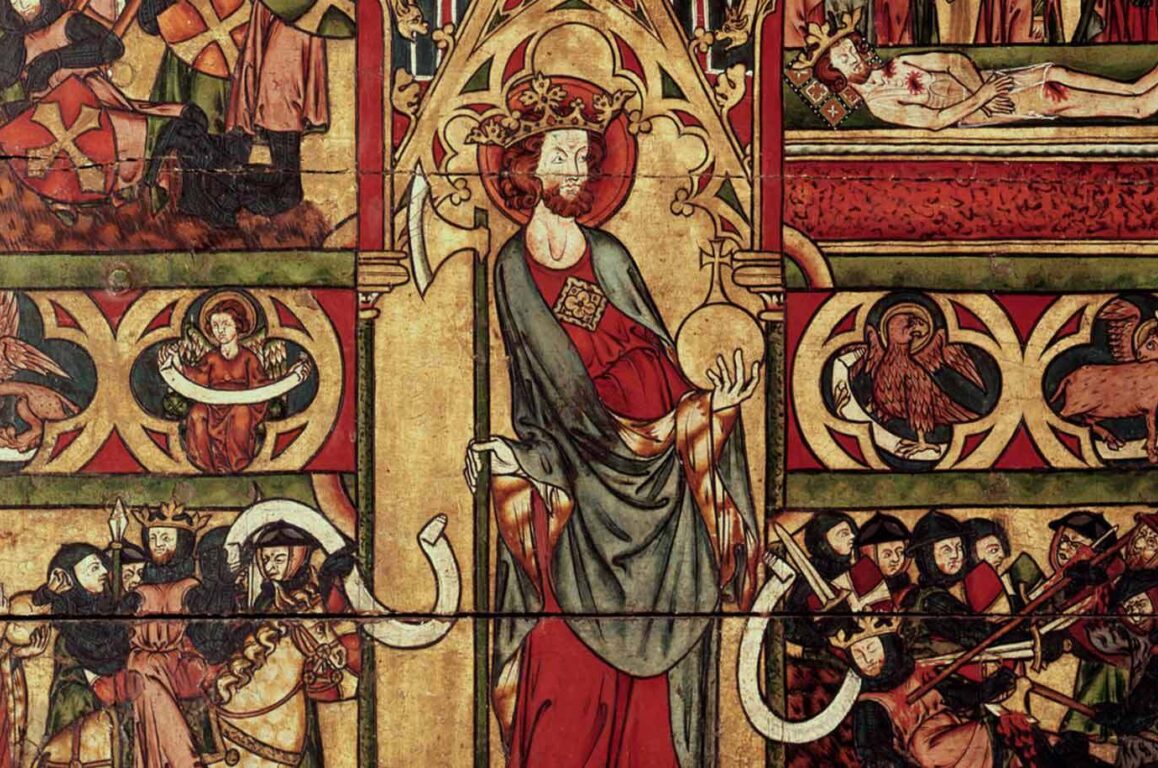
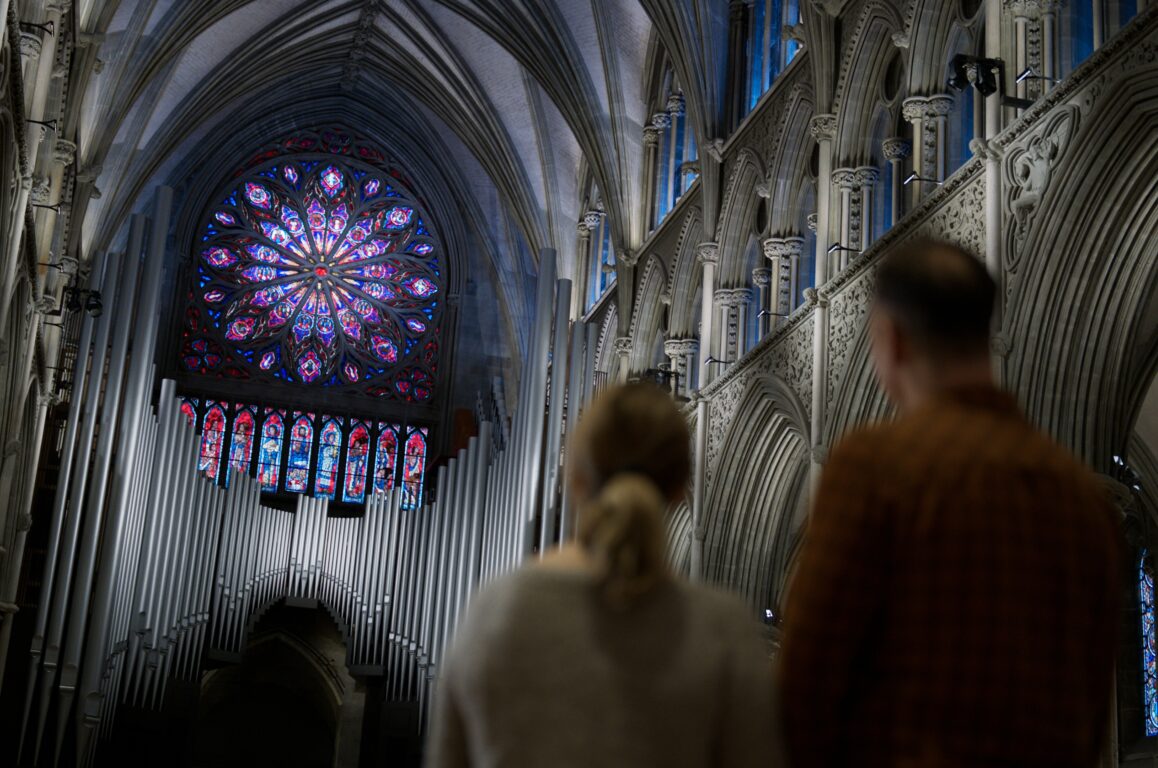
Photo: Øystein Moe/Helmet
The oldest cathedral in the north
As you walk around the church you will discover the details of the majestic edifice that is Norway's national shrine. Built out of soapstone in gothic style, with its magnificent green copper spire topped by a golden ball, it is a landmark visible from all over Trondheim. We recommend that you set aside a fair amount of time to experience the cathedral. Taking a guided tour is highly recommended.
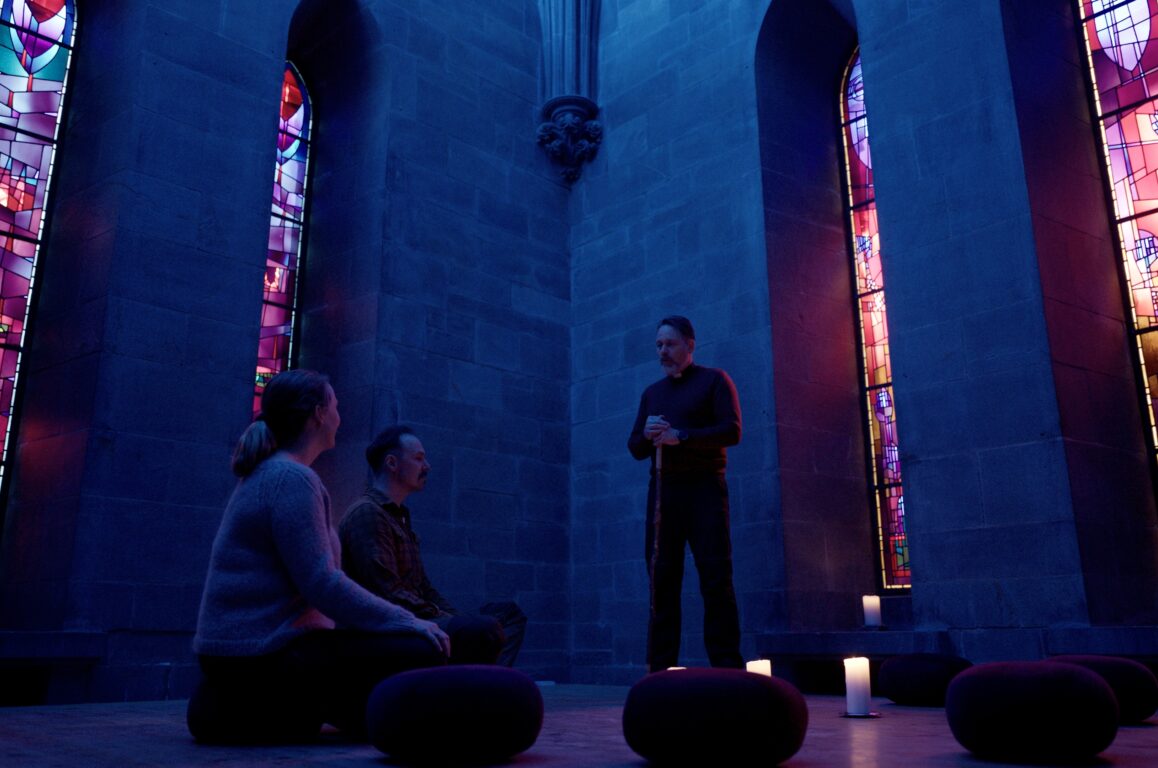
Foto: Øystein Moe/Helmet
Facts about Nidaros Cathedral
- Norway's national shrine and the oldest medieval church in the Nordic region.
- Olav Kyrre began construction of the stone church in 1070, after demolishing the chapel that stood here.
- The Archbishopric was established in 1153.
- Archbishop Eystein Erlandson altered the building style of the cathedral from Romanesque to High Gothic, after bein inspired by the church buildings he saw on a journey to England in 1183.
- The foundations of the mighty West Front were laid in 1248 and later the Choir was built in a solid High Gothic style.
- The cathedral has been damaged by several fires, the first of which was in 1328, then again in 1432 and 1531.
- The main spire blew down in 1689 and the cathedral burned again in 1708 and 1719.
- The Nidaros Cathedral Restoration Workshop (Nidaros Domkirkes Restaureringsarbeider) was established in 1869, commencing the modern restoration period.
- The restoration has been continuous for the last 150 years and is still ongoing.
- The church is 50 meters wide and 100 meters long. The spire is 91 meters high.
- The West Front has 76 statues and many reliefs. The large Rose Window in the centre of the wall is 8 metres in diameter. It is presumed that the decor and statues on the Western Front were originally painted in bright colours.